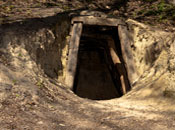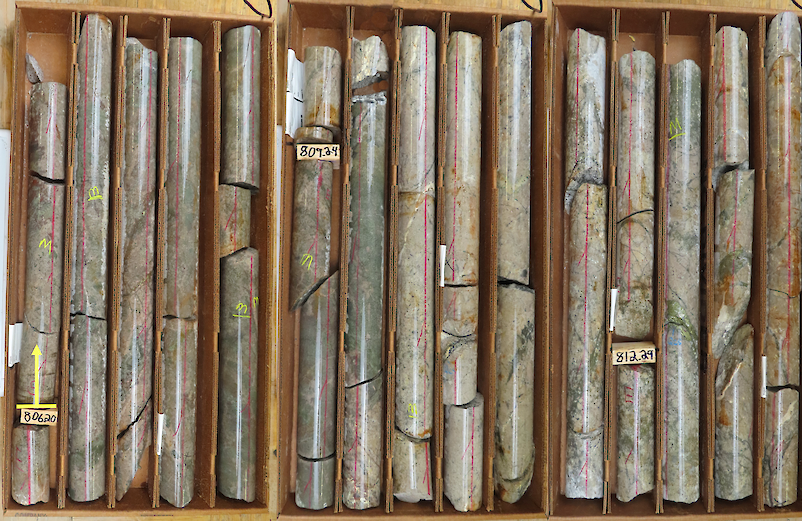
On my recent gold mine trip to northern Nevada, it's clear that the state is enjoying a resurgence of gold-mining activity.
Sure, the gold isn't falling out of the hills in boulder-sized nuggets. But like we recently discussed, it’s very minable. . .for a profit.
Today I'd like to cover the story from the ground floor. Showing you a few of the players in the area along with an outside way to play Nevada's gold boom. Let's dig in…
According to the U.S. Geological Survey Nevada mined over 5.4 million ounces (Moz) of gold in 2012. That accounts for 75% of domestic production.
And although the production is down, compared to a decade ago, mine production has rebounded from a low in 2009. Indeed, with more physical demand for the metal worldwide, Nevada's mining district is worth a look. I'm expecting a continued boom in the area for years to come—after all, it is the world's second largest gold field!
That said, let's dive into some of the players in Nevada’s gold rush. . .
The big boys on the block are Newmont (NEM) and Barrick (ABX). As you’d expect, Nevada operations are only part of these "big gold" miners' portfolios—so naturally neither is a pure-play on the Nevada gold rush.
But it is important to note that both Barrick and Newmont are seeing a real resurgence in the area and with a few more years of positive gold strikes via their deposits or a neighbor's, each company could enjoy a little Nevada-based bump in share price.
Just for housekeeping purposes let's cover each company's Nevada exposure.
Barrick is the largest producer in the state. In North America the company produced 3.4 Moz last year, over 3 million of which were produced in Nevada. Barrick's two premiere mines are Cortez (1.37 Moz produced in 2012) and Goldstrike (1.17 Moz produced in 2012.)
Newmont is the state's second largest producers with over 1.7 Moz produced in 2012.
Here’s how Newmont describes its Nevada operations:
[We've] been pouring gold in Nevada for nearly 50 years along a 100-mile stretch of highway in the north section of the state. Our Nevada properties operate as an integrated unit, and together, they boast the widest variety of processing methods of any gold mining complex in the world. This allows us to maximize economic recovery of gold from a wide range of ore types and grades. Operations include 14 open-pit and four underground mines and 14 processing facilities. In addition to gold, our operations produce silver and copper.
It's safe to say that a lot of the mining traffic in northern Nevada can be racked up to these two behemoths. In fact, according to one of the folks I talked to on my trip, Newmont and Barrick are "runners of gold processing facilities"—so besides mining they’ve got a lot of logistics and operations under their belt. Heh, and if you want to use one of their processing facilities get ready to pay out the wazoo!
But, even though the big guys have a strong presence in the Nevada gold field—there's room for the little guys to make some money, especially if they own their own processing plant.
The company I visited last week goes by the name of Pershing Gold Corp. (PGLC.) To be sure, this is a small junior miner, and currently sits in the preproduction phase. That said, it's a good example of how up-and-coming miners are starting to hit the Nevada gold scene.
The company has rights to a large open pit mine—by my estimates it’s about 15 miles south of a Newmont property (so you know you're in the right neighborhood.) From the geologist’s standpoint they know there is mineable gold there—just ask the core samples! All of the infrastructure is already in place—the pit, the crusher and the processing facility. Plus, the whole operation is close to 75% permitted.
Operations for this type of mine are chemically complex, but relatively easy to understand: mine the rock, crush the rock, "heap leach" the rock and separate the gold.
At this stage in the game, for a miner like Pershing, cash is king. The company still needs some money to get operations running—somewhere to the tune of $30 million (not an easy task in today’s capital markets, but doable.) Once things are up and running, the company expects to see costs around $800 per ounce with production around 50,000 ounces per year—it's all very mineable considering current gold prices.
Another example of a Nevada junior company is a spinoff of Pershing Gold, which goes by the name of Valor Gold Corp. (VGLD).
Valor is a "greenfield" company, meaning the company is still in the early stages of evaluating its assets to develop a commercial plan. If you're looking for reliable cash flow and gold production you won't want to bet on this horse—indeed it's a far cry from a Newmont or Barrick. But, much like a wildcatter in the oil biz, a greenfield play is where you could expect to see the highest growth potential—especially if they hit it big.
An Outside Way to Play Nevada's Gold Boom
While we wait for some of these mining plays to gain momentum, there is an outside investment angle to look at. . .
You see, a lot of the gold that comes out of the ground in Nevada is initially processed at the mine. Each processing facility will pour its own "dore" bars. Dore is an alloy that includes both gold and silver—but it's far from pure.
From the dore pour, the gold and silver needs to be further refined so it can be sold on the open market more easily.
That's where a big precious metal refiner like Johnson Matthey Gold & Silver Refining comes in to play. The company is the leading refiner of newly mined gold in the U.S. Their refiner complex is found in nearby Salt Lake City, Utah.
By no stretch of the imagination could you assume that most of the gold that's coming out of the hills in Nevada (and the silver too) is being refined in Salt Lake City at Johnson Matthey’s facility.
From there, the gold is available to be sold on the open market—through Johnson Matthey's accreditation they can service the London Bullion Market, the CME Group the Tokyo Exchange and the Dubai Commodities Center. At this stage there’s no more need to sell your gold at a discount to some local mom and pop shop, instead it’s on the global market!
A gold refiner is the gateway to the open ocean of gold. Better yet, it's a great way to play Nevada’s mining resurgence.
Unfortunately Johnson Matthey Gold & Silver Refining isn’t a publicly listed company.
However, Gold & Silver Refining is a wholly owned subsidiary of Johnson Matthey Plc (JMPLY). In this sense Johnson Matthey Plc is by no means a pure play on Nevada's gold boom, but when you take a step back and look at the company’s global presence, you’ll see there’s a lot of reason to like this play.
The parent company, Johnson Matthey, is the largest global, full service refiner of precious metals. So not only is it a good way to play Nevada's boom, it's a good way to play a global mining boom. All without the risks associated with boom and bust mining plays.
As a little icing on the cake, Johnson Matthey is also a big player in the platinum and palladium market. Not only do they refine the stuff, they also have massive exposure to the emission/catalyst market. So in a boom year for the platinum group metals (PGMs) Johnson Matthey could do very well. A quick look at the uptrending chart shows Johnson Matthey is up 24% year over year.
While we wait for things to shake out in the mining sector, Johnson Matthey may be a good way to tiptoe into the gold's next leg higher. If the action I'm seeing from Nevada is any indication, things could be booming for metal refiners for years to come.
Keep your boots muddy.
Matt Insley
The Daily Reckoning



































